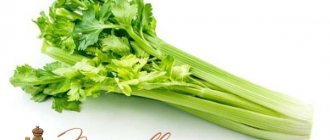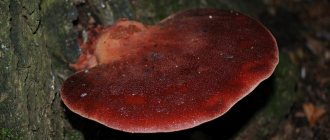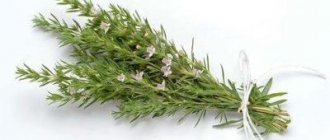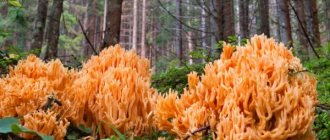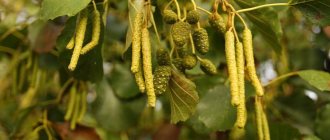Author: Natalya Category: Garden plants Published: September 04, 2016Republished: February 05, 2019Last edits: January 06, 2021
- When to plant turnips in the ground
- How to grow turnips
- Turnip processing
- Useful properties of turnip
The turnip vegetable (lat. Brassica rapa subsp. rapifera), or fodder turnip , is a biennial from the Cruciferous or Brassica family, a variety of rutabaga, widespread exclusively in cultivation. The largest areas are sown with turnips in Denmark, Germany, Canada, the USA and Australia. On an industrial scale, the turnip plant is grown to feed livestock. The turnip root crop has been used by Scandinavian tribes since the Bronze Age as a food product, the value of which was equal to the value of bread, and only with the advent of potatoes did this type of turnip become more of a fodder crop than a food one. Turnip turnips or rutabaga-turnips were grown in the Ancient world - Egypt, Rome and Greece, as well as in the territory of modern Afghanistan and Southern Europe.
Planting and caring for turnips
- Planting: turnips for food in the summer are sown at the end of April, and for storage - in the first ten days of July. Turnip seeds are sown for seedlings in early April, and seedlings are planted in open ground from mid to late May.
- Lighting: bright sunlight.
- Soil: soddy-podzolic peat bogs or loams with pH 5.0-6.5.
- Watering: abundant, at the rate of 5-6 liters of water per 1 m², 1-2 times a week.
- Top dressing: on poor soils - 2 times per season with a solution of bird droppings (1:20) or mullein (1:10). In June or July, superphosphate is added to the solution, which increases the sugar content of root vegetables.
- Reproduction: seed.
- Pests: spring cabbage and sprout flies, wavy and cruciferous flea beetles, cabbage moths, aphids, rapeseed bugs and flower beetles.
- Diseases: clubroot, white, mosaic, black leg and vascular bacteriosis.
Read more about growing turnips below.
Turnip vegetable - description
In the first year of life, turnips form a root crop and a rosette of leaves, and in the second year - flowers and seeds. The leaves of the plant of forage varieties may be pubescent, while salad varieties have smooth leaves. The shape of the root crop can be cylindrical, spherical, round or rounded-elongated. The color of the turnip rhizome, depending on the plant variety, can be yellowish, white, purple, or a combination of any of these colors in one root crop. Yellow turnip flowers, blooming in the second year, are collected in a brush. The fruit is an elongated pod with black or dark red seeds.
Turnips are related to crops such as turnips, rutabaga, radishes, radishes, daikon, mustard, horseradish and all types of cabbage. Currently, many table varieties of this tasty and healthy crop have been developed. We will tell you when to sow turnips for seedlings and when to plant turnips in open ground so that they do not die from return frosts, how to grow turnips in the garden, what varieties of turnips exist, how and when to collect them, where and how to store them, as well as what This valuable food and feed crop has beneficial properties.
What is turnip and what does it look like?
Turnip is a vegetable crop from the Cruciferous family, a close relative of turnips and rutabaga, has another name - fodder turnip. Biennial plant. The root crop is formed mainly due to the subcotyledon than due to the root. It has a round or cone shape.
As you can see from the photo, the color of the vegetable, turnips can be different. The upper part of the root crop, located above the soil surface, is green or purple, the underground part is white or yellow, depending on the color of the pulp.
Turnip leaves are light green, simple, elongated-oval, dissected, with entire or serrated edges. A characteristic feature of the culture is the pubescence of the leaves. In table varieties there are leaves with a smooth surface. The turnip root goes into the soil to a depth of 80 to 150 cm, and a width of 50 cm.
The growing season is 35-90 days, depending on the variety. This is a long day plant. The culture is cold-resistant, seedlings can withstand frosts down to -5°C. Seeds are able to germinate at a temperature of +2°C. The optimal temperature for the development of root crops is +15°C.
Important! Turnips do not tolerate heat well and require light.
To grow a vegetable crop, a sum of active temperatures in the range of 1800-2000°C is required.
Growing turnips from seeds
Sowing turnip seeds
Planting and caring for turnips is simple and easy. Spring sowing of turnips in the ground is carried out in late April or early May, and summer sowing in the first ten days of July. Growing turnips through seedlings begins in early April. Small seeds are mixed with coarse sand in a ratio of 1:10 and sown in peat pots, then sprinkled with a layer of sand 1-1.5 cm thick, carefully sprayed with a fine spray and, covering the crops with glass or film, placed in a warm place.
- Why plant onion seedlings?
Growing turnip seedlings
After the emergence of seedlings, the strongest seedling is left in the pot, the rest are pinched off so as not to damage the root of the developed seedling by pulling it out. Caring for turnip seedlings follows the same principle as caring for turnip, rutabaga or radish seedlings.
Turnip pick
Like all cruciferous root vegetables, turnips do not tolerate transplantation very well, which is why they are sown not in boxes or containers, but in separate pots so that they do not have to be picked.
Uses of turnip
The vegetable is actively used in folk medicine. Freshly squeezed juice helps remove kidney stones, fights coughs, relieves pain of various localizations, improves heart function, and is used to treat joint diseases. Fresh eliminates bleeding gums. A decoction of the root vegetable is drunk for asthma, bronchitis, tachycardia, to improve sleep and loosen the intestines. They are used to gargle with sore throat, gingivitis, stomatitis, and inflammation of the gums. An ointment based on turnips and goose fat treats frostbite, and a poultice of boiled vegetables relieves pain from gout.
Turnips are used in cooking as a main and secondary ingredient. Fodder turnips are added to salads, cutlets, lamb, pork, beef, and poultry. The taste is sharp, without a pronounced aroma, reminiscent of something between fresh cabbage and radish. The vegetable is combined with sour cream, vegetable oil, potatoes, cheese, and tomatoes. A great combination is turnips and a boiled egg. Americans stew turnips with ham and bake them in pots, and the Japanese fry the root vegetable with salt.
Planting turnips in open ground
When to plant turnips in the ground
Transplantation of seedlings into open ground is carried out when spring return frosts have passed - from mid to late May. To the question “When to plant turnips in Siberia?” We answer: when stable warm weather arrives. Since turnips really need moisture, they choose a sunny or slightly shaded place in a low-lying area. The best predecessors for turnips are beets, strawberries, winter and spring grain crops and annual grasses, and after cruciferous crops, turnips can be grown on a plot no earlier than 4 years later.
Soil for turnips
Loams and soddy-podzolic peatlands with a pH value of 5.0-6.5 pH are most suitable for the plant. The soil in the garden bed needs to be prepared in the fall: when digging to a depth of 20-25 cm, add rotted manure in the amount of one bucket per 3 m² and one glass of wood ash or one and a half glasses of Nitrophoska per 1 m². Do not use fresh manure for fertilizer - it can cause the pulp of the root crop to darken and lose its taste, and the peel may crack.
How to plant turnips in open ground
Dig holes at a distance of 20-30 cm, keeping row spacing 40-60 cm wide. Carefully remove the pre-watered seedlings from the cups along with a lump of earth, place them in the hole, cover with soil, compact it around the seedlings and water. Seedlings grown in peat pots do not need to be removed from them, but placed in the hole directly with the dishes. When the water is absorbed, mulch the bed with a layer of peat.
Planting turnips before winter
Turnip seedlings are not planted before winter, although winter sowing of turnip seeds in the ground is becoming increasingly popular.
- Patisson: growing from seeds, varieties
How to eat a vegetable
Both root vegetables and young tops are used in cooking. Since the pulp has a distinct bitterness, turnips can be doused with boiling water before use to remove the bitterness. The tops are used in salads, soups, and as a filling for pies. Root vegetables are stewed and baked, they are used to prepare salads and side dishes for meat, especially fatty varieties, and vegetable soups.
Ingredients for vegetable soup :
- potato;
- turnip;
- leek;
- bulb onions;
- carrot;
- celery (stem);
- rice or pearl barley.
The cooking method is quite simple.
- First, add potatoes and turnips to boiling water, after cutting them into medium cubes. Boil together with well-washed pearl barley (rice).
- While they are boiling, cut the onions into small cubes, leeks and celery into slices, carrots into medium cubes. The vegetables are first sautéed in oil, then poured into a pan and cooked until tender.
- The soup is seasoned. A few minutes before readiness, add bay leaf, parsley, and black peppercorns.
Turnips can be baked in a sauce, such as cream. To do this, onions are thinly sliced and sautéed in butter. Thin slices of turnips are placed in a baking dish greased with butter, then onions. Mix milk and cream, a little flour in a bowl, pour the sauce over the vegetables. Bake in the oven for approximately 30 minutes.
Turnips are baked or added to soups.
Turnips may not be the most popular product, but this vegetable is worth trying. It gives soups and a variety of side dishes an interesting flavor. Particularly good in combination with fatty meats, such as pork.
Turnip care
How to grow turnips
Planting and caring for turnips in open ground follows the same rules as growing turnips or rutabaga - you will have to water the bed, loosen the soil on it, remove weeds in a timely manner and apply fertilizer. Loosening to a depth of 8 cm and weeding is carried out after watering or rain. Before the first loosening, it is advisable to sprinkle the bed with ash or mustard to repel cruciferous flea beetles. If you sow turnip seeds directly into the ground, then as soon as the seedlings have 2-3 leaves, you need to thin them out.
Watering turnips
Growing and caring for turnips involves, first of all, timely watering of the plant, since the root crops become bitter due to lack of moisture. At the same time, excessive moisture makes them watery. Turnips need abundant watering, but the water should not erode the soil from the top of the root crop, as this will cause it to turn green and lose its nutritional value. Water consumption at the initial stage of growth is 5-6 liters per m² of bed, and from the moment the fruits form, the rate should be reduced to 3-4 liters per unit area. The frequency of watering is 1-2 times a week, although the weather may make adjustments to the schedule.
Feeding turnips
On poor soils, turnips are fed twice a season with organic matter - a solution of chicken manure (1:20) or slurry (1:10), adding superphosphate to the organic solution in June or July to increase the sugar content of root crops. Turnips respond well to additional fertilizing with manganese, copper and boron. Fertilizers are applied to the moist soil, and after the solution is absorbed, the soil in the garden bed should be loosened. If you grow turnips in fertile and well-fertilized soil, then you do not need to fertilize.
Pests and diseases of turnip
Like all other cruciferous crops, turnips can suffer from diseases such as clubroot, white, mosaic, blackleg and vascular bacteriosis. Of the pests, the most dangerous for turnips can be considered flies - spring cabbage and sprout flies, as well as wavy and cruciferous flea beetles, cabbage moths, aphids and bugs, rapeseed bugs and flower beetles. You can find detailed information about these diseases and pests in articles devoted to growing turnips, daikon, rutabaga and other plants of the Brassica family, which are already posted on our website.
Turnip processing
Fungal diseases of turnip can be controlled by treating the area with fungicides - Fundazol, Quadris, Fitosporin and other drugs of similar action. There is no cure for diseases such as mosaic, so diseased specimens should be immediately removed and burned.
As for pest control, dusting plants with wood ash is effective against fleas, while other insects must be destroyed with insecticides - Actellik, Aktara and similar preparations. But the most reliable protection of turnips from diseases and pests is strict adherence to crop rotation, cultural practices and timely care.
Benefits and harms
People who regularly eat this vegetable are more effective in resisting ARVI and influenza. Experts recommend including the product in the diet for diseases of the circulatory system. The root vegetable thins the blood, which prevents the development of thrombocytosis and normalizes blood pressure. Turnip strengthens arteries, veins and capillaries, reduces their permeability. Useful for anemia as it increases hemoglobin. During colds, flu, and bronchitis, the vegetable promotes the removal of sputum, increases sweating, removes fluid from the body, and relieves inflammation.
The phytoncides and mustard oil included in the composition inhibit the activity of bacteria and viruses. The juice calms the nervous system, improves attention, memory, and thinking. Turnip is good for the intestines: coarse fiber relieves constipation, removes toxins, improves the secretion of digestive juices, and stimulates peristalsis. The root vegetable lowers blood sugar levels, helps to lose excess weight, and improves appetite. Rutabaga should be consumed by people with osteochondrosis, gout, and polyneuritis. Decoctions and infusions of vegetables get rid of worms.
Cleaning and storing turnips
On average, turnips take 24 weeks from sowing to mature. When technical ripeness is reached, the lower leaves of the turnip turn yellow, wither and dry out. Turnips sown in spring are harvested from the end of June as they ripen. These root vegetables do not last long. And root crops for winter storage, depending on the variety, are harvested in September or October. Do not allow root vegetables to freeze - at a temperature of -6 ºC they become flabby and lose their keeping quality.
- Carrots: planting for winter 2021
When harvesting, the root crops are pulled out or dug up, removed, cleared of soil, the tops are cut off, leaving only about 2 cm, and placed under a canopy to dry. Only whole, healthy and dry root vegetables without signs of mechanical damage, disease or pest damage are suitable for storage. Keep turnips in storage at a temperature of 0 to 2 ºC and air humidity within 85-90%, laying the root crops on a flooring made of boards.
You can dig a trench up to 1 m deep in the garden in the direction from south to north, put turnip roots in it, sprinkle them with dry soil or peat and cover the top with moisture-proof material.
Types and varieties of turnips
Turnip varieties are divided into yellow-meat and white-meat. The difference is that root vegetables with yellow flesh contain more dry matter than root vegetables with white flesh, and they are stored better, but white-fleshed varieties are more productive.
The best varieties of turnips with yellow flesh are:
- Long Bortfeldsky is a variety with underdeveloped tops. The leaves are bright green, raised. The elongated yellow root crop is immersed in the soil half its length and is difficult to pull out because it has branched roots. The pulp is yellow, medium juicy and excellent taste;
- Finnish-Bortfeldsky is a variety with strong green tops and raised petiolate leaves. The root crop is dark in color, half immersed in the soil, has many roots and is difficult to remove from the ground. The pulp of this variety is yellow, juicy and tasty;
- Greystone is a variety with a medium amount of tops and raised green and yellow leaves on yellow petioles. The root, round and flattened on top, is deepened by a quarter; in the part protruding from the ground it is greenish, scaly, and yellow in the lower part. It has few roots, so it is easily removed from the soil. The pulp is yellow, weakly juicy and unpalatable – typical forage turnip;
- Yellow violet -headed is a variety with underdeveloped tops and raised bright green leaves on purple petioles. The rounded, flattened root, dark purple on top and yellow on the bottom, can be pulled out without much effort. The pulp is yellow, tasty, but weakly juicy;
- Yellow Tankard is a variety with highly developed tops and semi-raised green leaves on green petioles. The root crop is elongated, green at the top, yellow at the bottom, overgrown with roots, immersed in the ground half its length, so it is difficult to remove. The pulp is juicy, dark, of good taste.
The best varieties of turnips with white flesh:
- turnip Osterzundomskiy (Esterzundomskiy) is a variety with underdeveloped tops and semi-raised green leaves on purple petioles. The elongated root crop is purple on top, white at the bottom, recessed half its length and overgrown with roots, so it is removed with effort. The pulp is white, medium taste with bitterness;
- Six-week turnip is a variety with underdeveloped tops and raised bright green leaves with light green petioles. Greenish at the top and white at the bottom, the round, slightly flattened root crop is buried a quarter of the volume into the ground, has a small number of roots, so it is easily removed. The pulp is white, juicy and has excellent taste;
- Norfolk white round is a variety with highly developed tops and green semi-raised leaves on purple petioles. The root crop is round, flattened both above and below, purple, and the color intensity is stronger in the underground part. The root crop is immersed in the ground only a fifth of its length, so it is easily pulled out. The pulp is white, juicy, good taste;
- Round redhead is a turnip with developed tops and raised leaves on purple petioles. A rounded, flattened root crop, dark purple at the top and white at the bottom, immersed in the soil a third of its length, so it is easily removed. The pulp is medium juicy and has good taste;
- White ball is a new variety, with a rounded root crop that sits in the ground up to the middle of its length. The above-ground part of the root crop is purple, the underground part is white. The pulp is white and juicy.
Properties of turnip - harm and benefit
Useful properties of turnip
The main components of turnip that have a positive effect on human health are essential oils, organic acids and flavonoids. As a dietary food, turnip helps relieve constipation by cleansing the intestines of toxins, regulates metabolism, strengthens the immune system and improves appetite. As a bactericidal agent, turnip has a positive effect on the intestinal microflora, improves the digestion process, and cleanses the body of parasites.
The anti-inflammatory effect of the product is manifested in the treatment of the upper respiratory tract, diseases of the throat and oral cavity - for example, the expectorant effect of turnip allows you to quickly clear the lungs of mucus during bronchitis.
The essential oils contained in turnips improve the functioning of the circulatory system and cleanse the blood of cholesterol, while the copper and iron contained in it help replenish the blood with hemoglobin, preventing the development of anemia.
Another feature of turnip is its ability to lower blood sugar levels, preventing wear and tear and loss of elasticity of blood vessels and promoting weight loss. And the potassium compounds contained in the plant remove excess fluid and sodium salts from the body, which has a positive effect on the condition of the genitourinary system, bones and heart.
The phytocomponents contained in turnips in large quantities can serve as a preventative against cancer by activating the body's antioxidant defense mechanism.
Turnips - contraindications
It is not recommended to eat turnip for people with exacerbation of diseases of the gastrointestinal tract, since the coarse fiber of this plant can cause severe irritation of the inflamed mucous membrane of the internal organs.
Benefits of turnip
Probably, many of us don’t even know what turnips are, and what they are needed for in general. However, if you're interested in this nutritious vegetable, you've probably heard of it. So, turnip is one of the plant products essential for our body, which helps us maintain our health and even cope with some diseases.
Turnips can combat constipation and excess weight; its use is indicated for diabetics and obese people.
Turnip primarily contains vitamins and minerals. Just 75 grams of turnip vegetable pulp will saturate the body with essential substances.
The composition of the product is varied and includes such important substances as proteins, carbohydrates, organic acids, flavonoids and vitamins. Turnip seeds are enriched with linolenic acid, vegetable fats, oils and vitamin C. In addition, the vegetable contains large quantities of vitamins B, A, E, potassium, magnesium and iron.
If you eat turnips every day, you can normalize digestion and also replenish your body’s reserves of vitamins and minerals.
Turnips, thanks to the large amount of vitamin C in its composition, helps strengthen the walls of blood vessels. As for the taste of the vegetable, due to the absence of bitter oils, the root vegetable does not taste bitter and fits well into vegetable dishes.
Turnips are suitable for dietary nutrition and are used by overweight people as a mono product, because 100 g. Turnip pulp contains only 32 calories.
The influence of turnips on the body’s immune system, like any other vegetable, is invaluable. Thanks to fiber, vitamins and minerals, turnip fights gastrointestinal diseases.
With long-term use, turnip is capable of normalizing blood pressure, influencing blood thinning, preventing the formation of cholesterol plaques, preventing thrombophilia and strokes.
In addition to the above, turnip strengthens blood vessels, reduces the risk of developing infectious diseases, by increasing immunity.
Relieves swelling and inflammation locally, for superficial burns and bruises.
Daily consumption of turnips reduces psychological stress, improves memory and helps restore concentration.

